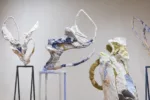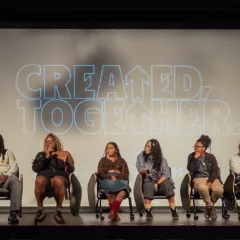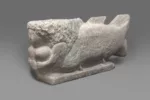Visual artist Anna Hepler just completed her collaborative art-making venture at Delaware County Community College (DCCC). Known for her large-scale inflatable sculptures out of sheet plastic and colored tape, Hepler took up shop at the school in order to build some of these blow-up forms in and around the school’s main Marple campus. The mix of 70s era architecture and more contemporary buildings is further stirred up by the addition of massive geometric forms strewn in their midst that allows students and faculty alike to flex many of their creative muscles.
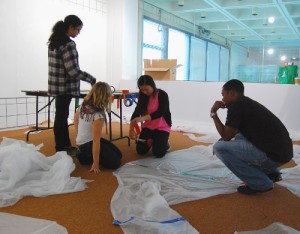
Jaime Treadwell, assistant professor of art at DCCC, initially approached Hepler — a former professor at Bowdoin College and significant contemporary artist, whose work is in many major art museums in the United States and abroad — to visit and work with the college on a collaborative sculpture project in lieu of her inflatable sculptures and she happily agreed. The process is, after all, completely conducive to the type of atmosphere present at an institution of higher learning for a number of different reasons.
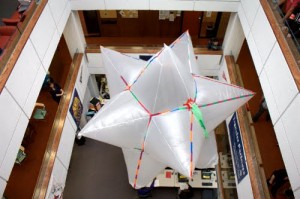
Although Hepler can design and assemble her sculptures by herself, the addition of an assembly line makes the workload much easier to divide amongst various parties. At the Marple campus, the artist, students and faculty worked in groups constructing the various components of the three dimensional geometric compositions. A certain Artblog correspondent may have also helped lend a hand when the need arose. A large number of art projects in academic settings are typically solo endeavors – life drawing, ceramics and much of design are all one-person jobs – the need for the occasional group exercise is wise to keep participants on top of their teamwork game.

The forms themselves are all geometric shapes including spheres and stellated dodecahedrons (3-dimensional starbursts reminiscent of the Moravian star). Utilizing basic geometric patterns, the end results are concrete objects with a set appearance. This final goal allows all of the teams to visualize the end result and the segments which compose it, creating a smooth transition from sheet plastic and colored tape to inflated sculpture. If the forms were more open to interpretation – an animal for instance – the ending may not be quite as cohesive. Here, the objects are free from outside influence. They stand alone as just what they are without superfluous free-associative baggage.
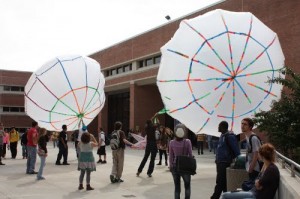
As a fixture on the campus, the sculptures serve as a pleasant and enticing way to jar people out of their daily routine and iPod-induced isolation. Everyone knows that many of us are constantly enveloped by our daily routines. Aside from an art installation, a team-building exercise and a geometry project, these bulbous balloons also serve as a way to suddenly and temporarily throw a wrench in the works of the daily college grind.
For DCCC, Hepler’s visit is surely a multi-faceted benefit for everyone involved, both figuratively and literally. While most any artist can come to plop down a piece of buffed aluminum on a grassy college lawn, creating a fully interactive and multi-disciplinary plan takes a certain type of skill and contagious energy. For all involved, the installation was certainly an entertaining and engaging romp into public art.


